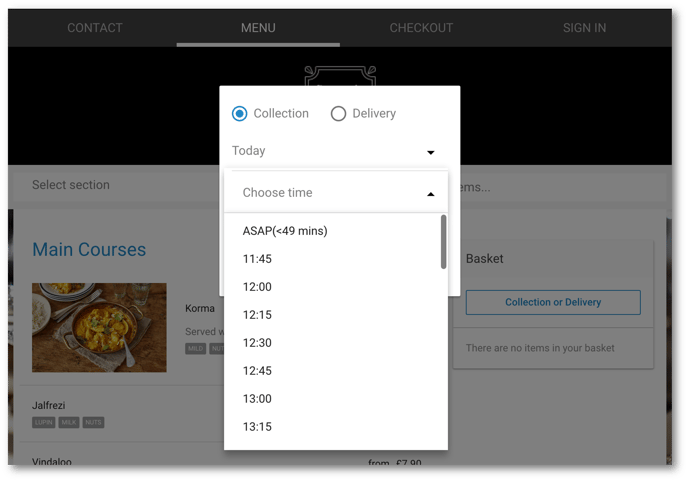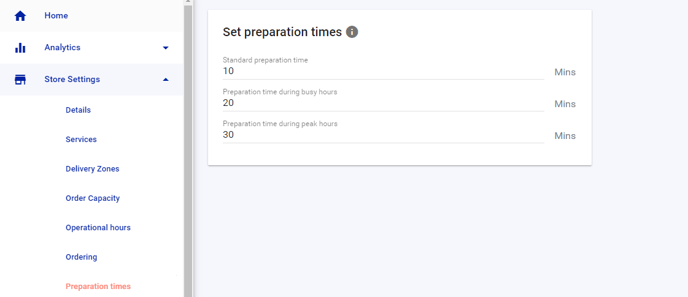The preparation times that you set on your dashboard are the times that you are telling the customer that it takes to make their order.
There are three times that you can alternate between depending on how busy the kitchen/bar currently is, and this is reflected live in the order slot (time) that the customer is able to order for.
First we look at what this means for the customer journey and the order management, and then we look at how to set it up.
This is for stores that use the QikServe order management system, and is not for any stores that are POS integrated. If you are POS integrated please contact your POS provider for how they would like this configured.
How to use Preparation times
-
Go to QikServe and login
-
You can change the Preparation time from the top of your orders page
-
Here, you can select the preparation time based on your level of trade at any given time. If for example the kitchen or bar is really busy then select peak to stem the flow of orders that can come in

-
This immediately affects the time slot that the next customer is able to order for.
Let’s say for example the preparation time is set to busy (35 minutes) and we have 15 minute time slots. A customer won’t be able to select and make an order for a time slot that is less than 35 minutes from current time.
The next available time slot is always labelled ASAP. From the screenshot below it is 49 minutes because we were 1 minute past the window of being able to order for 11:15am so it has pushed us back to 11:30am which in this scenario is 35 minutes + 14 minutes -
If you have moved your preparation time to busy or peak, please note it will return to your standard preparation time on your next working day

If we were to select delivery as our service, then the next available ASAP time slot would also include any delivery time that you have set as part of your delivery zones.
Setting the Preparation Times
-
On the Dashboard navigate to Venue Settings > Preparation times
-
Enter the time in minutes it will take to prepare an order during standard, busy and peak periods

